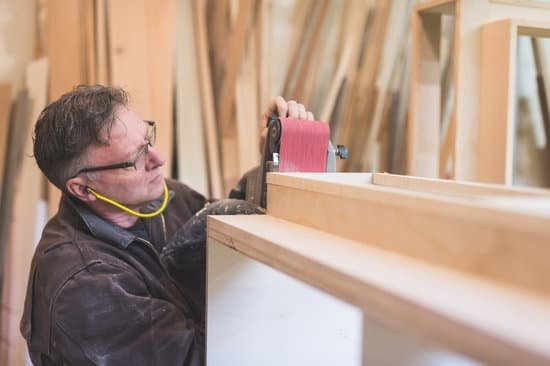Are you looking to create the perfect workspace for your woodworking projects without breaking the bank? Learn how to build an inexpensive woodworking bench and enjoy the benefits of having a sturdy and functional work surface. From planning and preparation to step-by-step construction and customization options, this article will guide you through the process of creating a budget-friendly bench that meets your needs.
A reliable woodworking bench is essential for any woodworker, providing a stable surface for sawing, drilling, sanding, and assembling projects. However, purchasing a pre-made bench can be costly. By building an inexpensive bench yourself, you can customize it to your specifications while saving money in the process.
In the following sections, we will cover everything from planning and preparation to choosing affordable materials and customizing your woodworking bench. We’ll also discuss safety considerations during construction, tips for maintenance and care, as well as a cost comparison between building your own bench versus purchasing one. With this comprehensive guide, you’ll be ready to take on the project and create a functional and cost-effective workspace for all your woodworking endeavors.
Planning and Preparation
When it comes to building an inexpensive woodworking bench, proper planning and preparation are essential. The first step is to determine the size and design of the bench based on the available space in your workshop or garage. Consider the type of woodworking projects you typically work on to ensure that the bench will meet your needs.
Once you have a clear idea of the bench’s specifications, create a list of materials and tools needed for the project. This will help you stay organized and within budget throughout the construction process.
Setting a budget for the project is also crucial. By determining how much you are willing to spend on materials and hardware, you can prioritize affordability without sacrificing quality. Keep in mind that there are many affordable wood options available for building a sturdy bench, such as pine or plywood. Additionally, researching where to find inexpensive but high-quality lumber and hardware will be beneficial in sticking to your budget.
| Wood Type | Average Price Per Board Foot |
|---|---|
| Pine | $1.50 |
| Plywood | $1.80 |
By following these steps and making thoughtful choices during the planning and preparation phase, you can successfully build an inexpensive woodworking bench without compromising on quality or functionality.
Choosing Affordable Materials
When building an inexpensive woodworking bench, the choice of materials plays a crucial role in keeping costs down without compromising quality. One of the most affordable options for the top surface of the bench is to use construction-grade spruce or pine lumber.
These types of wood are readily available at hardware stores and are much cheaper compared to hardwoods like oak or maple. Additionally, plywood is another cost-effective alternative for the benchtop, offering durability and stability at a lower price point.
For the bench legs and frame, pressure-treated lumber is a suitable and economical choice. This type of wood is resistant to decay and insect damage, making it a practical option for a long-lasting woodworking bench. Another consideration for the frame is using dimensional lumber, which is less expensive than specialty wood but still provides sufficient strength and support for the bench.
In terms of hardware and fasteners, opting for generic or off-brand screws, bolts, and nuts can result in significant savings without sacrificing quality. Many hardware stores offer bulk pricing on these items, allowing builders to acquire all necessary components at a lower cost. It’s important to remember that while choosing affordable materials is essential for building an inexpensive woodworking bench, it’s equally important to prioritize quality to ensure safety and longevity.
| Material | Use |
|---|---|
| Construction-grade spruce or pine lumber | Benchtop |
| Plywood | Benchtop |
| Pressure-treated lumber | Bench legs and frame |
| Dimensional lumber | Bench frame |
Step-by-Step Construction Process
Building an inexpensive woodworking bench requires careful planning and precise execution. Follow these step-by-step instructions to create a sturdy and functional bench without breaking the bank.
- Measure and cut the wood: Start by measuring and cutting the wood according to the dimensions of your chosen design. Use a sawhorse or workbench to support long pieces of lumber while cutting to ensure accuracy.
- Assemble the frame: Once the wood is cut, assemble the frame of the bench using screws or nails. Make sure to align the pieces properly and use a level to ensure that the frame is square and stable.
- Add the tabletop: Attach the tabletop to the frame using screws, making sure it is securely fastened. Consider adding additional bracing underneath for added stability.
When securing the bench legs, use strong joinery techniques such as mortise and tenon joints or dowels for added strength. Additionally, consider adding diagonal braces or stretchers between legs for increased stability.
For those wanting a more personalized touch, there are plenty of customization options available for your woodworking bench. You can install storage shelves or racks for tools, providing convenience and organization in your workspace. Additionally, consider adding a finishing touch with paint or stain to protect the wood from wear and tear.
By following these steps and paying special attention to detail throughout construction, you can build a durable woodworking bench that suits your needs without breaking your budget.
Customization Options
Building an inexpensive woodworking bench does not mean sacrificing customization options. In fact, there are various ways to personalize your bench to fit your specific needs and preferences. Here are some ideas for adding extra features to your bench:
- Storage Shelves: Consider adding shelves underneath the bench or on the sides to store tools, wood, or other supplies. This can help keep your workspace organized and efficient.
- Tool Racks: Install hooks or racks on the sides or back of the bench to hang frequently used tools. This ensures easy access and keeps your work area clutter-free.
- Clamp Holders: If you frequently use clamps in your woodworking projects, create a space for storing them on the bench. This can be as simple as attaching a wooden block with holes for holding the clamps.
In addition to functional features, you can also enhance the appearance of your woodworking bench with a finishing touch. Once the construction is complete, consider applying paint or stain to protect the wood and add visual appeal.
- Paint: Choose a color that matches your workshop décor and apply a coat of paint to protect the wood from wear and tear.
- Stain: If you prefer the natural look of wood, opt for a wood stain that enhances the grain while providing protection against moisture and damage.
By customizing your inexpensive woodworking bench with additional features and a professional finish, you can create a workspace that is not only practical but also visually pleasing. These personal touches will make your bench uniquely tailored to your woodworking needs while still being cost-effective.
Safety Considerations
Woodworking can be an enjoyable and rewarding hobby, but it is important to prioritize safety when building your inexpensive woodworking bench. Accidents can happen if proper precautions are not taken, so it is essential to be mindful of safety considerations throughout the construction process.
Protective Gear and Tool Usage
It cannot be emphasized enough how crucial it is to wear the appropriate protective gear while working on your woodworking bench. This includes safety glasses to protect your eyes from flying debris, ear protection to guard against loud power tools, and a dust mask to prevent inhalation of wood particles. Additionally, it is imperative to use tools properly and responsibly. Always follow the manufacturer’s instructions for each tool and avoid shortcuts that may compromise safety.
Minimizing Risk
In addition to wearing protective gear and using tools properly, there are other steps you can take to minimize the risk of accidents during the construction of your woodworking bench. Keep your work area clean and organized to avoid tripping hazards, and always ensure that your tools are in good working condition before using them. When cutting or drilling materials, make sure they are properly secured to prevent unexpected movement that could lead to injuries.
Seeking Guidance
If you are new to woodworking or unsure about how to safely complete certain tasks related to building your bench, do not hesitate to seek guidance from experienced woodworkers or professionals. There are numerous resources available, such as instructional videos, forums, and workshops that can provide valuable insight into best practices for safely constructing a woodworking bench.
By prioritizing safety considerations during the construction process of your inexpensive woodworking bench, you can enjoy the satisfaction of creating a functional workspace while minimizing the risk of accidents or injury. Remember that taking the time to implement safety measures will contribute greatly towards a successful and fulfilling woodworking experience.
Maintenance and Care
Once you have built your inexpensive woodworking bench, it is important to prioritize its maintenance and care to ensure its longevity and continued functionality. Proper maintenance will also help prevent any potential accidents or hazards that may arise from a deteriorating bench. Below are some tips for maintaining and caring for your woodworking bench.
Regular Cleaning
Keeping your woodworking bench clean is crucial in maintaining its condition. Regularly remove any sawdust, wood shavings, or other debris from the surface of the bench. This not only keeps your workspace tidy but also prevents the accumulation of moisture and potential damage to the wood.
Protective Coatings
Consider applying a protective coating such as varnish or polyurethane to the surface of your woodworking bench. This will add an extra layer of protection against scratches, stains, and general wear and tear. Be sure to follow proper application instructions and allow for adequate drying time before using the bench again.
Check for Loose Fasteners
Periodically inspect the bench for any loose fasteners, such as screws or bolts. Tighten them as needed to ensure that the structure remains stable and secure during use.
By following these maintenance tips, you can keep your inexpensive woodworking bench in good condition for years to come, saving you money in the long run by avoiding costly repairs or replacements.
Additionally, staying proactive about regular maintenance will ensure that your bench remains a safe and reliable tool for all your woodworking projects. Remember that taking care of your bench is an investment in both your craft and workspace.
Cost Comparison
Building an inexpensive woodworking bench can be a cost-effective alternative to purchasing a pre-made one. When comparing the total cost of building the bench versus buying one, it’s essential to consider the long-term savings and benefits. While building a bench may require an initial investment of time and money, the result is a sturdy and personalized workspace that can last for years with proper maintenance.
One of the primary advantages of building an inexpensive woodworking bench is the ability to customize it according to your specific needs and preferences. By choosing affordable materials and personally constructing the bench, you have full control over its design, size, and features. With careful planning and attention to detail, you can create a functional workspace that meets your exact requirements without breaking the bank.
In addition to the initial construction costs, it’s important to consider the long-term value of building an inexpensive woodworking bench. By using quality but affordable materials and regularly maintaining the bench, you can ensure its longevity and durability.
This means that over time, the cost of building your own bench can be significantly lower than continuously replacing or repairing a pre-made one. Ultimately, weighing the cost of materials, tools, and time against potential savings and customization opportunities can help determine whether building an inexpensive woodworking bench is the right choice for you.
Conclusion
In conclusion, building an inexpensive woodworking bench is a cost-effective and rewarding project for anyone who enjoys working with wood. Not only does it provide a sturdy and functional workspace, but it also allows for customization to meet individual needs and preferences. By following the outlined planning and preparation process, choosing affordable materials, and carefully constructing the bench step by step, anyone can create a high-quality woodworking bench without breaking the bank.
The cost comparison clearly shows the advantages of building an inexpensive woodworking bench over purchasing a pre-made one. While it may require more time and effort, the long-term cost savings and the satisfaction of creating something with your own hands make it well worth the investment. Additionally, maintaining and caring for the bench over time will ensure its longevity and continued usefulness.
Therefore, if you have been considering how to build an inexpensive woodworking bench, we encourage you to take on the project. Not only will you end up with a practical and personalized workspace, but you will also gain valuable woodworking skills along the way. We hope this article has inspired you to embark on this fulfilling DIY endeavor, and we look forward to hearing about your own woodworking bench projects and experiences.
Frequently Asked Questions
Is It Cheaper to Build a Workbench or Buy One?
Building a workbench can be cheaper if you already have the tools and materials needed. However, buying a workbench may be more convenient and save time, especially if you lack woodworking skills.
What Can I Use Instead of a Work Bench?
If you don’t have a workbench, you can use sturdy sawhorses with a flat board on top as an alternative. Other options include using a thick door placed on two filing cabinets or creating a makeshift table using plywood and sawhorses.
What Kind of Wood Is Used for Woodworking Benches?
Woodworking benches are typically made from hardwoods like beech, maple, or oak due to their durability and strength. These woods are able to withstand the wear and tear of woodworking activities, providing a stable and long-lasting work surface for various projects.

Hi everyone! I’m a woodworker and blogger, and this is my woodworking blog. In my blog, I share tips and tricks for woodworkers of all skill levels, as well as project ideas that you can try yourself.





